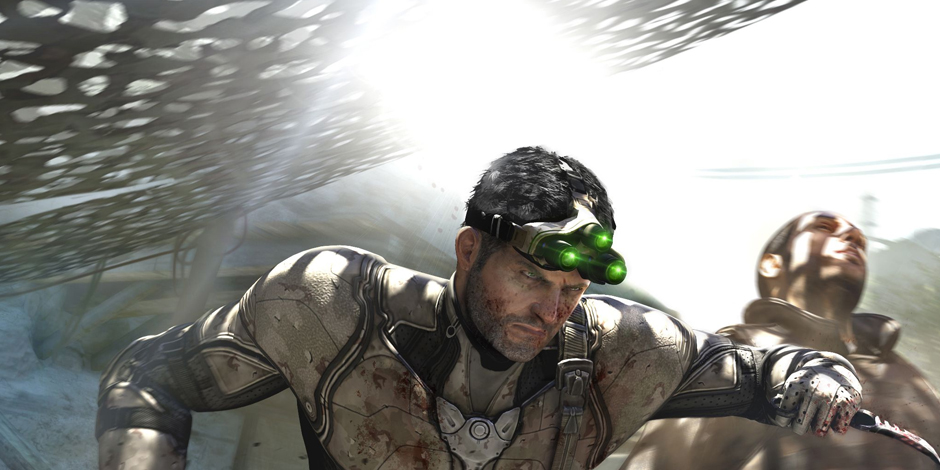GamesRadar+ Verdict
Pros
- +
Open-ended approach to clearing missions
- +
Sam's extensive gadget loadout
- +
Addictive multiplayer offering
Cons
- -
Receiving fewer rewards for choosing certain playstyles
- -
Monochromatic personality of the new Sam
- -
Occasionally getting spotted by guards even when hidden
Why you can trust GamesRadar+
After twenty minutes of painstakingly inching through an enemy compound unseen, you come across some terrorists chatting about their day. You set up a sticky camera on a nearby structure to observe their movement patterns and scope out your surroundings. To your left is a ventilation shaft that will let you bypass the group. Or, you could shimmy up a nearby pipe and knock them out one at a time by distracting them with noisemakers. Then there's the guns-blazing method. It's simple to mark your targets, run at them until they're in range, and perform a badass execution mid sprint. If there's one thing you have in Tom Clancy's Splinter Cell Blacklist, it's the option to play however you want, making this an accessible stealth game that will still appease the hardcore crowd.
As returning lead man Sam Fisher, it's up to you to stop the Engineers, a terrorist organization intent on bringing America to its knees with a series of attacks known as the Blacklist. This story is one of the franchise's more thrilling espionage narratives; you'll travel around the world in an attempt to uncover the Engineers' plans and preemptively stop them dead in their tracks. Though you can tackle missions at your own pace, the gravitas of your overarching objective creates a mild sense of urgency. And while longtime fans may find Sam's new voice to be a bit jarring (if not a little too passive and lacking in personality), his character is pleasantly convincing.
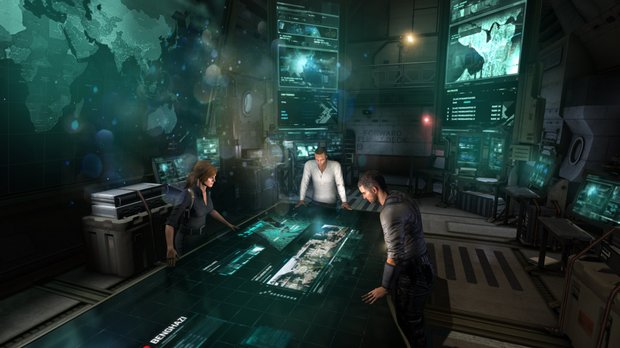
"...the gravitas of your overarching objective creates a mild sense of urgency."
Best of all, Blacklist places as much an emphasis on stealth as you want it to thanks to its well-designed equipment upgrade system. Completing missions, secondary objectives, and co-op outings scores cash payouts used to buy advanced ops suits and gear. If you prefer the hardcore challenge of earlier Splinter Cell games, you'll want to pick up stealth-oriented equipment; while this kit decreases your chances of being seen, it also makes it extremely difficult to survive a firefight, forcing you to skulk in the shadows. Likewise, those who really enjoyed the action-heavy approach of Conviction can purchase armored suits that will keep you alive when confronting the Engineers head-on.
However, you may take issue with the fact that there's a slight disparity in the cash rewards you'll receive depending on how you play. The biggest payouts are obtained by avoiding enemies altogether, a gratifying but difficult challenge, but if you even so much as touch a guard, non-lethal or no, you're out a few bucks. The run-and-gun players have it even worse, increasing the potential that you won't be able to afford that fancy new gun you've been eyeing without replaying a mission or two. It's one thing to tie an end-of-mission score to your stealth skills--Splinter Cell is, after all, a stealth series--but it's disingenuous to punish players for playing a certain way when they're told from the start that they can play however they want.
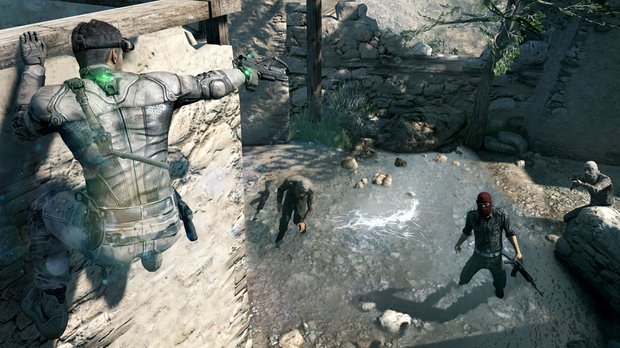
"...Blacklist places as much an emphasis on stealth as you want it to..."
Still, Sam has plenty of tools at his disposal to ensure you'll get the most out of your preferred playstyle. There are distraction items for keeping guards busy so you can sneak by, lethal traps and weapons for picking them off, and a number of observational devices ideal for mapping out patrol routes so you can plan a detailed strategy. Even your base of operations can be upgraded to provide additional bonuses in the field, such as a radar that highlights enemy positions, among others. Being able to customize every aspect of Sam's loadout is a neat touch that really makes you feel in control of how a mission will go down, and the sheer number of unlockables and upgrades are enough to warrant multiple playthroughs. It also helps that Blacklist is immensely enjoyable to play.
The stealth and combat here are as graceful as they've ever been. It's incredibly easy to move from cover to cover while guards have their backs turned (though you may get frustrated during the rare occasions in which guards will see you even when you should be hidden), and it's hard not to be impressed by Sam's animations as he knocks out an unsuspecting enemy or climbs a nearby ledge. Similarly, the gunplay is finely tuned, and, should you find yourself in a life or death situation, it's not at all difficult to resort to some last-minute twitch shooting. The Mark & Execute feature is sure to come in handy here, but you won't be able to abuse it as much this time around thanks to the number of enemies who've adopted the latest fashion trend: armored helmets.
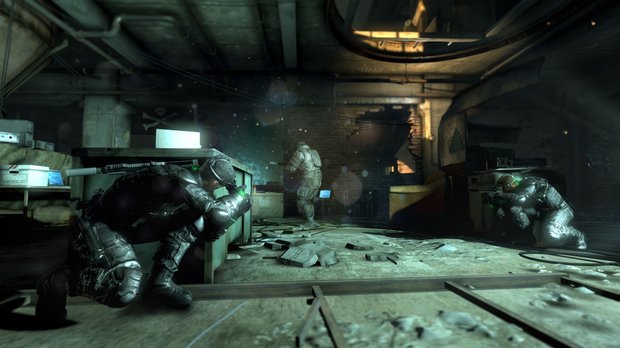
"The stealth and combat here are as graceful as they've ever been."
For the most part, AI-controlled enemies are consistently challenging, and sometimes change things up when you least expect it. You may hide in the shadows to get a feel for their patrol routes only to have them take an unexpected turn every now and then. These situations don't happen too frequently, but they'll keep you on your toes--as will the terrorists' use of guard dogs and RC-sized drones. That's not to say guards won't stumble across an unconscious body (don't forget to hide them) and say loudly, "huh, he's knocked out," before cautiously continuing along their path, but they're some of the more unpredictable opponents out there.
And if you want to change things up, there are plenty of optional co-op missions to try, some of which can be taken on solo. These encompass a variety of objectives; some are centered around taking out waves of enemies while others are grueling stealth missions that fail the second you or your partner alert a guard. Playing with a friend is a great way to build up your cash reserves without progressing further in the main story, and no co-op mission feels too similar to another.
For those looking for a bit of competitive action, Blacklist's Spies vs. Mercs mode is as tense as it is addictive. There's a two-against-two mode akin to Pandora Tomorrow's original, in which two spies have to hack a series of computer terminals while two merc players hunt them down in first-person, as well as a four on four version of the same mode. You'll love the shift in perspective depending on which side you're on, and a variety of customizable loadouts for each drastically change the flow of each match. Avoiding the searching eyes of four human opponents is far more of a rush than staying hidden from AI-controlled opponents in the single-player campaign.
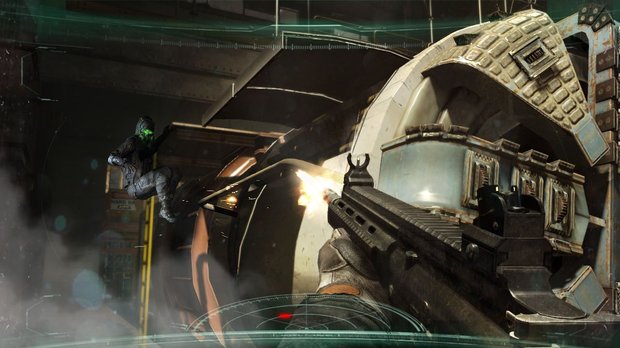
"...Blacklist's Spies vs. Mercs mode is as tense as it is addictive."
Blacklist is a well-designed game from top to bottom, one that is both accessible and flexible. It doesn't force you into playing a specific way, and it provides all the tools necessary to accommodate your playstyle, retaining the agility of its predecessor without its restrictions. With a great single-player campaign and multiplayer offering, there's a lot here to love, even if none of it will particularly blow you away.
The single-player campaign was reviewed on Xbox 360, multiplayer on PS3.
More info
| Genre | Action |
| Description | Sam Fisher is back and leader of the newly established Fourth Echelon. A secret terrorist organization is planning a series of attacks against the United States and it is up to the formerly retired Splinter Cell to stop them. |
| Franchise name | Tom Clancy's Splinter Cell |
| UK franchise name | Splinter Cell |
| Platform | "Xbox 360","PS3","PC" |
| US censor rating | "Mature","Mature","Mature" |
| UK censor rating | "","","" |
| Release date | 1 January 1970 (US), 1 January 1970 (UK) |
Ryan was once the Executive Editor of GamesRadar, before moving into the world of games development. He worked as a Brand Manager at EA, and then at Bethesda Softworks, before moving to 2K. He briefly went back to EA and is now the Director of Global Marketing Strategy at 2K.
